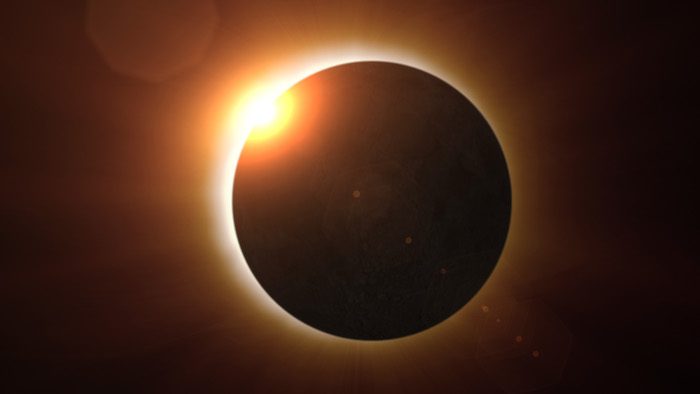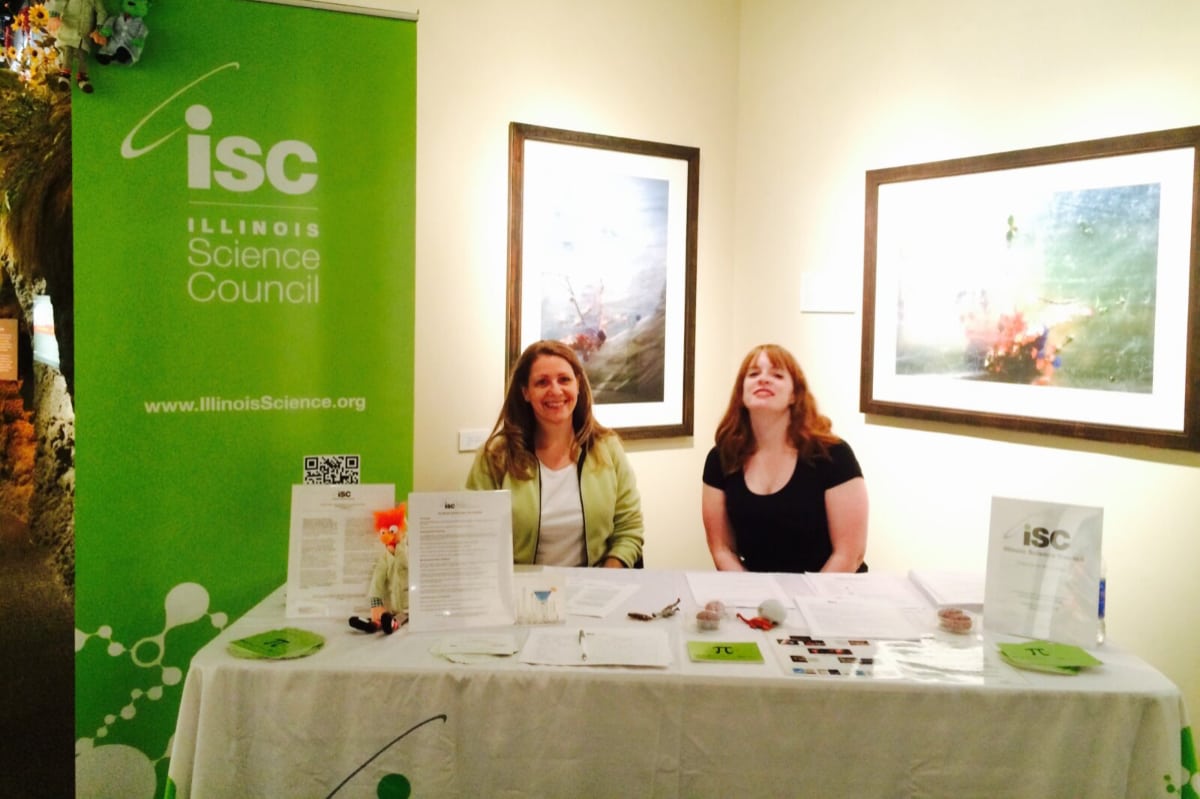Science and art share a storied history, especially in the study of human anatomy. For centuries, practitioners of these two disciplines have borrowed skills, techniques, and knowledge from each other in an effort to enrich their own work. Anatomists have explored art as a means to show the world their discoveries, while artists have examined the human body through a scientific lens to find inspiration and to develop a keener sense of the detail of our form and function.
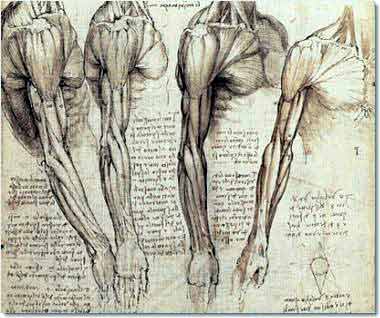
Leonardo da Vinci’s sketch of the musculature of the human arm.
Many individuals have walked the line between science and art in the area of human anatomy. For instance, Santiago Ramon y Cajal, the father of modern neuroscience, put the human brain under the microscope and drew what he saw – what came of this work was a beautiful collection of artistic masterpieces. On the other hand, Michaelangelo, one of the world’s greatest artists, was also an early anatomist – he started dissecting bodies when he was only 12 years old. Leonardo da Vinci, known for his engineering as much as he is known for his art, used his sketchpad to draw and describe the human form in great detail.
The intimate relationship between science and art continues today. One example can be found at the International Museum of Surgical Science (IMSS) in Chicago, IL, where museum curators invite rotating guest artists to create art inspired by the museum’s collection. We interviewed Vesna Jovanovic, the IMSS’s current artist in residence, to learn more about her approach towards creating art based on human anatomy:
Vesna, what degrees, certificates, or training have you completed that prepared you for your career? How did you decide to become a full-time visual artist?
I have completed a Bachelor of Arts in Visual Art (with an emphasis in Ceramics); a Bachelor of Science in Chemistry; a Bachelor of Fine Arts in Studio Art; and an Masters of Fine Arts in Photography. As a child, I was a curious and adventurous with strong crafting skills. I enjoyed spending most of my time creating things, and I received some early recognition for my drawing abilities. Despite having grown up in an immigrant working-class household with reasonable fears of pursuing a viable art career in this country, I have never felt doubtful or confused about pursuing art professionally. It matched my sensibilities.
Why did you decide to pursue a degree in chemistry after you completed your fine arts degree?
My original intent was to major in art while minoring in chemistry just for fun; I really enjoyed the mathematical abstraction and puzzle-solving elements of chemistry. However, the requirements for a chemistry minor had so many prerequisite courses that double-majoring just ended up making more sense. The chemistry minor was designed for students who were already pursuing another branch of science.
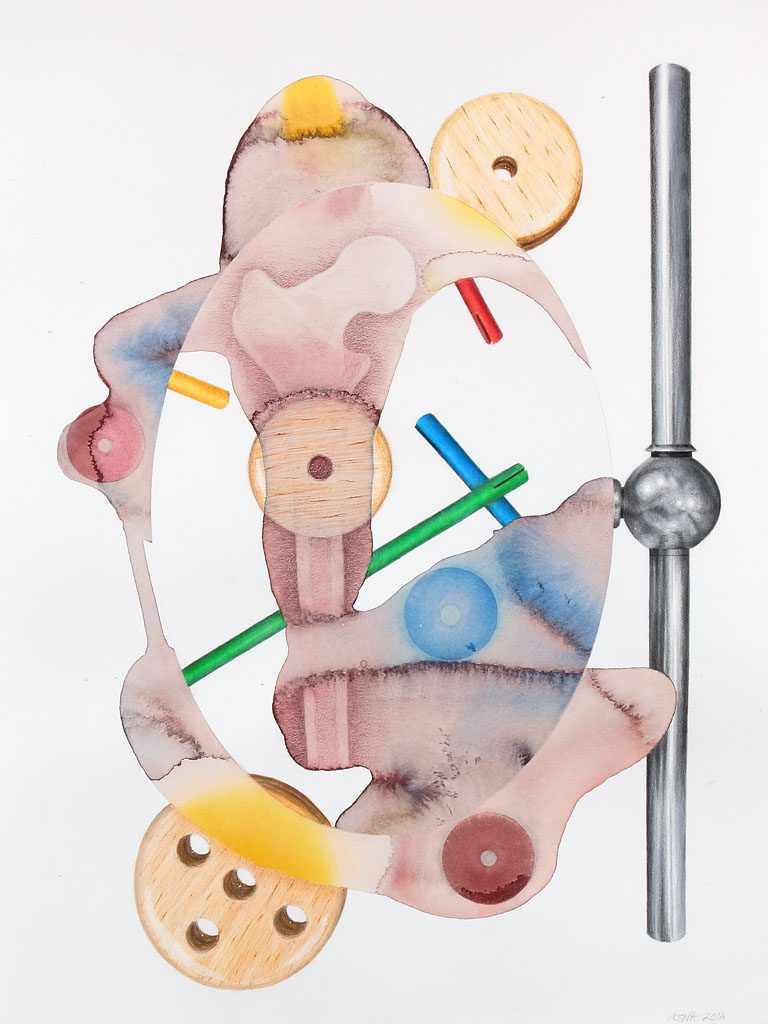
© 2014 Vesna Jovanovic, Frank Z., 16″x12,” Ink and Colored Pencil on Paper
Have you taken additional anatomy classes in order to enhance your artwork? Have you participated in or observed any dissections à la Michelangelo and da Vinci?
While I was an art student, I took several figure drawing classes that included some studies of human anatomy, but I have never participated in a dissection. If the opportunity ever presented itself, it would be a real pleasure to create some anatomical studies from cadaver dissections. Perhaps there is a blog reader who could put me in touch with someone at a cadaver laboratory!
When and how did you begin to see the human body as a subject for your art?
That’s a great question. Oddly enough, I deliberately avoided biology-related courses throughout college. For me, the suffering of animals, objectification of life, and morbid fascination with living systems were too disturbing to sidestep. My interest in the body stems from more of a theoretical approach. The human body is a site of so many converging relationships, problems, ideologies, and various manifestations of the culture at large. I became interested in the body primarily as a vehicle for venturing into these ideas rather than out of a sheer interest in the functioning of various body parts.
How would you describe your approach towards drawing and painting the human body? What media do you use?
I use tools that are traditionally associated with medical illustration: mixed media on paper. This includes colored pencils, watercolors, ink, gouache*, and graphite. The substrate is watercolor paper, bristol board, or polypropylene. I use randomly spilled ink as a guide, and a phenomenon called pareidolia** helps me begin the process of putting images together. I look at the spilled ink and begin to recognize images in the random shapes – images that ultimately guide me towards the next step.
*Editor’s Note: Gouache is an opaque watercolor paint.
**Editor’s Note: “Pareidolia” is the phenomenon where the brain sees a familiar pattern in something when one does not actually exist. For example, have you ever seen faces where they shouldn’t be, such as on a house or on Mars? Learn more about this here.
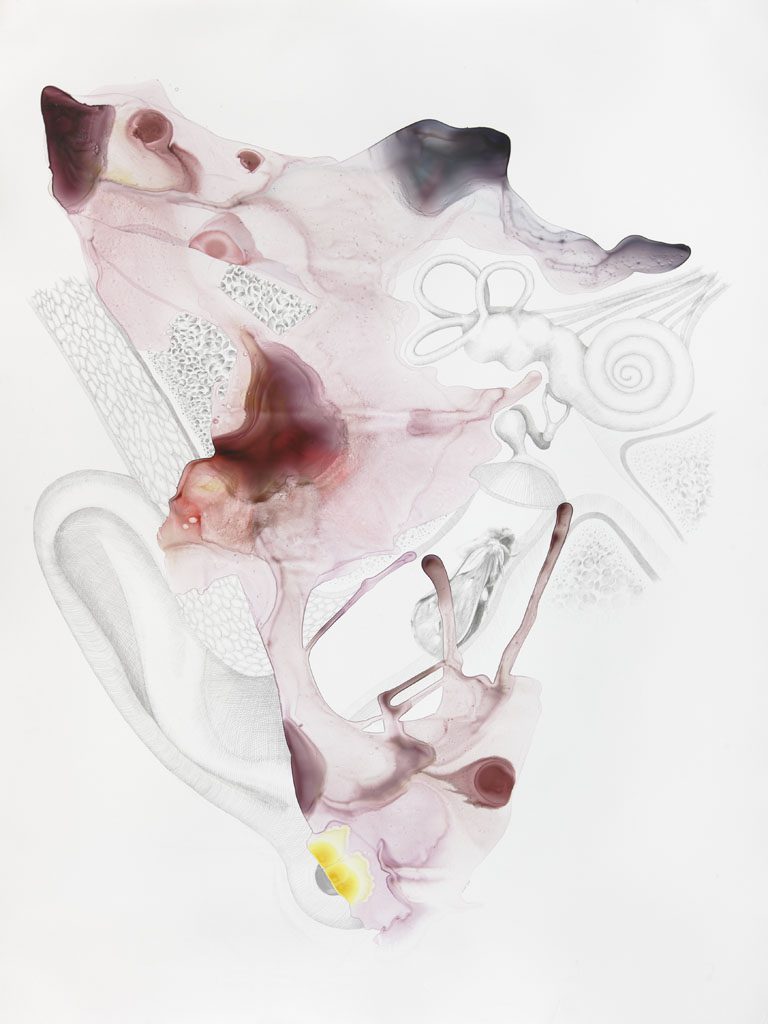
© 2013 Vesna Jovanovic, Moth, 80″x60,” Ink and Graphite on Polypropylene
How did your residency at the International Museum of Surgical Science come about? Which aspects of your work excited them most? What does your position as resident artist entail?
The curator who held the position when I began the residency, Lindsey Thieman, was most interested in my propensity to work with resources from my immediate surroundings. Her goal was to bring in an artist who would interpret the museum collection somewhat differently than a surgeon, doctor, or historian would. The residency was intended for mid-career professional artists who had an interest in collaborating with the museum and creating artwork that engages visitors in an unanticipated way. It is essentially a guest artist position. I am currently in communication with the new museum curator, Collin Pressler, who is developing his own vision for the artists’ residency program. You can visit me on most Thursdays and Fridays between 12-4pm with museum admission. My studio space is open to the public. Please feel free to email me if you intend to visit on a particular day.
In many ways (despite some notable exceptions), artists and scientists approach their work very differently. How did you find a balance between the rigid structure of science and the boundless nature of art? Do you tend to work more toward one side of this spectrum, or are you somewhere in the middle?
Although I have a strong interest in science and have enjoyed working in laboratories, my work is very much situated in the realm of art. I have been told that my ideas tend to come together in a scientific manner; I use extensive sketchbooks, reference images, color and brush tests, and detailed notes about my choices. However, this connection to laboratory practice is not intentional on my part. I see art and science as two sides of the same coin. Science seeks answers about the unknown, while art seeks questions about what we already know. I am more interested in practicing what the humanities can do, with the kind of poetic and uninhibited conceptual analysis associated with art.
Why do you think it is important to bring science and art together? Are you involved with any STEAM (Science, Technology, Engineering, Art, and Mathematics) initiatives?
I think that a holistic approach to learning is just as valuable as a holistic approach to one’s health. All of the academic fields, including science and art, are fundamentally tied; the boundaries between them are not always clear. Depending on the culture and time period in question, disciplines were grouped and divided in accordance with different principles. We just happen to live in a civilization that divides academic subjects in a particular way. I encourage adult art students to honor and maintain the curiosity that they experienced as children. Although I am not formally involved in a STEAM initiative, I do enjoy teaching, and I tend to build mixed course curricula that prompt the kind of excitement that comes with invention and creation. For example, in my ceramics classes I take the oxidation/reduction kiln atmosphere lectures just a bit further than one might expect of an art instructor.
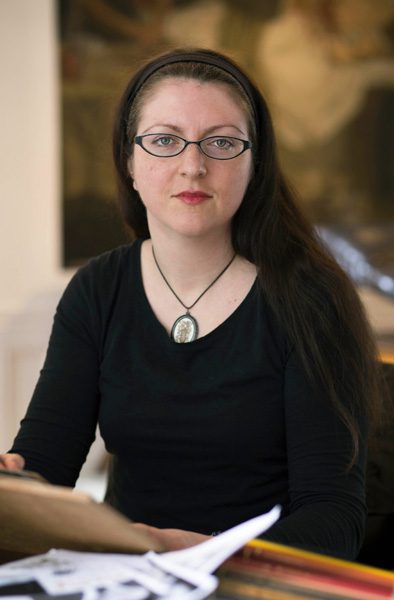
Vesna Jovanovic is a Chicago-based visual artist who specializes in conceptualizations of the human body. Images of her work have appeared in Science News; Time Out Chicago; and Newcity. Blog appearances include Discover Magazine; New American Paintings; and Art:21. Jovanovic is currently the Artist in Residence at the International Museum of Surgical Science in Chicago, IL (www.imss.org). You can view images of her work at www.vesnaonline.com, and follow her on Instagram and other social media websites using the handle @vesnaonline.
Caption for the featured image at the top of the article: © 2014 Vesna Jovanovic, Sadi Carnot, 24″x18,” Ink, Watercolor, Gouache, and Colored Pencil on Paper
-
Ben Marcus is a public relations specialist at CG Life and a co-editor-in-chief of Science Unsealed. He received his Ph.D. in neuroscience from the University of Chicago.
View all posts





